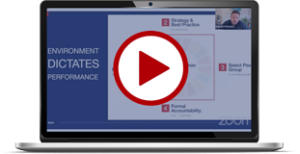I recently won an award for Profitability amongst a group of entrepreneurs with #AbundanceGlobal. There are qualities in all of the members that I want to emulate as they each improve themselves and their businesses every year.
One thing that surprised me was that not everyone was focused on profitability. I figured the reason everyone is in business is to make a profit, but it is often treated as leftovers after all expenses have come out.
Being the perennial tightwad I know myself to be when it comes to business, people started asking what I did to win an award in profitability.
Well, it’s been an interesting year, and it was the small things I changed and looking for efficiencies in the business that made the difference.
I’m in the finance industry, so it was triggered by the Royal Commission and the realisation that change is afoot. My business needs to be agile in the coming years. Policy changes had always loomed as a threat in my SWOT analysis but I hadn’t really put too much thought into what needed to change.
The new threat was the heavy focus on our commissions and knowing how much banks love profit. As mortgage brokers, we were like sitting ducks. I had to make plans so that I felt like I was one step ahead of the pack.
I saw these threats as opportunities. The opportunity I saw as a challenge to really analyse my business and strip out unnecessary costs, make my processes more efficient and create a better customer experience and better quality submissions, while further protecting my business from reliance on a single staff member. This analysis of my business meant I could deliver a better service at a lower cost with the capacity to scale further.
Becoming intimate with my business financials was a key exercise. I really needed to get down and dirty with the numbers. It’s the small things that can add significantly to the cost of running a business.
Here are 7 simple ways you can increase your profitability:
1. Bottled water – install a filter to save $1,200 a year
2. Paper files – switch to electronic files save $10,000 a year on paper and $5,000 a year on toner. Buy the printer outright and manage the consumables yourself a minimum of $3,000 a year
3. Review your phone plans – does everyone need a brand new phone on an unlimited plan? Cancel unused phone lines. If team members job is to make and receive calls Aldi uses the Telstra network at a fraction of the cost $1,200 a year in savings
4. Drive your car for at least a year after the lease is over $12,000 a year
5. Consider job roles and replace them with part-timers if the job permits. Can a full-time role be performed in fewer hours more effectively? There are plenty of parents looking for more flexible hours and productivity could go through the roof and save you thousands per year
6. Perform an annual costs review to ensure you are not paying for services that aren’t being used. As job roles evolve and team members are seeking more flexibility, consider how you could use your office space more efficiently. Rent out desk space? Sell unused office furniture and equipment?
7. Perform an annual efficiency review. There is plenty of time lost to inefficiencies. An audit of your business processes each year could save time and will be a valuable exercise for all those ‘on the tools’ to provide ideas and feedback on areas of improvement
Why do small business owners neglect profit? Corporate CEOs get big bonuses from it. We are not in business to be a charity – even charities make a profit, not-for-profits make a profit. No business can sustain itself long-term without profit.
You don’t have to be frugal, tight, or miserly. It may not be necessary to slash costs through redundancies or pay cuts. You just need to be mindful when it comes spending considering we are all in business for profit













